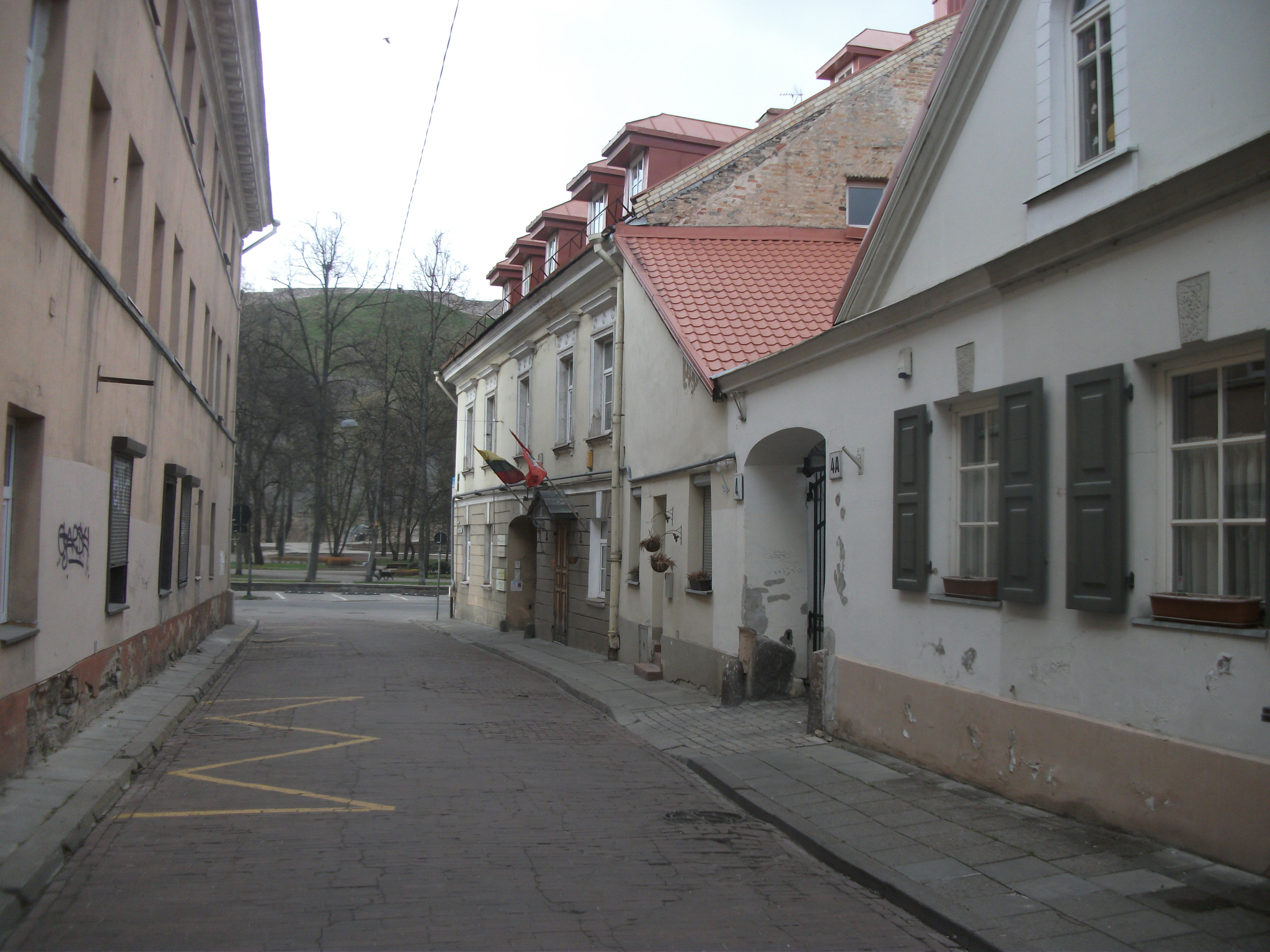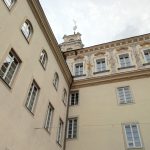Views: 271
 Šiltadaržio St. is ending at Bernardinų St.
Šiltadaržio St. is ending at Bernardinų St.
 Art Printing House Culture Center with the Theater in the street
Art Printing House Culture Center with the Theater in the street
 In the streeet, there is a Toy Museum and other cultural atractions
In the streeet, there is a Toy Museum and other cultural atractions
All photos are copyrighted by Vladislav B. Sotirovic
© Vladislav B. Sotirovic 2020
RELATED POSTS
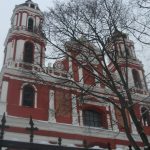
The church was built on the north side of the Lukiškių Square in 1624. However, the present building dates from the late 17th-18th cent.It is a single-nave Baroque church with cylindrical vaults. An image of the miraculous painting of the 18th century high altar occupies the niche above the porticoThe niches hold wooden 18th cent. statues of St. Hyacinth and St. Dominic. During the Soviet times there were designs to demolish the church but it did not ever happenAll photos are copyrighted by Vladislav B. Sotirovic© Vladislav B. Sotirovic 2018
Continue Reading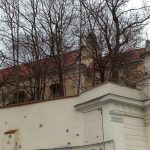
The church was originally Gothic but in 1750-1755 it was restored according to design by Franz Ignatius Hoffer and acquired some late Baroque and Rococo featuresNearby the church building stand the 17th-18th-century buildings of the Carmelite Monastery which had a rich archive and library. A study centre opereted there. In 1797-1944 it housed the Ecclesiastical Seminary Today the buildings are used by the Centre for Book Research and Libraries, and the church is closed to the publicAll photos are copyrighted by Vladislav B. Sotirovic© Vladislav B. Sotirovic 2020
Continue Reading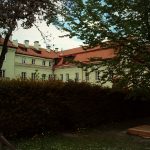
A small doorway in a plain building at Pilies (Castle) Street leads through a vaulted passage into a large yard. The yard was the original place of the Botanical Garden of the Vilnius University. It was founded by a French botanist, Jean Gilibert, in 1782The Botanical Garden remained in this yard for 10 years when it was transferred to Sereikiškių Park, and as well as provided accommodation for the university professors. Before becoming the Botanic Garden, the buildings around had been a college for noblemen. After the university was closed in the mid-19th century, the buildings were used by the Medical AcademyThe yard is the best and most probably the single place in Vilnius from where to admire the spectacularly decorated top of the apse of the Church of St. John's (the church in the grand courtyard of the University of Vilnius)All photos are copyrighted by Vladislav B. Sotirovic© Vladislav ...
Continue Reading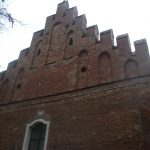
The church was named after St. Nicholas, who was the Bishop of Myra and the patron of travelers and merchants. The character of Santa Claus is thought to be based on this saintThe Church of St. Nicholas in Vilnius is the oldest surviving Late Gothic church in Lithuania. The small church was used by the Franciscan monks, who lived nearbyThe interior of the church is decorated with ornate rib and groin vaults. A 16th-century picture of St. Nicholas with a silver frame is located on the left altarAll photos are copyrighted by Vladislav B. Sotirovic© Vladislav B. Sotirovic 2018
Continue Reading
Mindaugas Bridge is constructed in 2003. It has the name of the only Lithuanian King crowned on July 6th, 1253On the foothill on the left riverside of Neris, there is a Renaissance building of Old Arsenal followed by the buildings of House of the Castle Keeper and New Arsenal On the right riverside of Neris, a new business center of Vilnius is growing during the last two decadesAll photos are copyrighted by Vladislav B. Sotirovic© Vladislav B. Sotirovic 2019
Continue Reading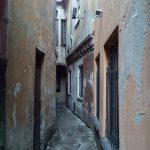
The entrance to the Knight Street in Vilnius Old TownA courtyard after the end of the Knight StreetThe end of the Knight Street (followed by the courtyard)All photos are copyrighted by Vladislav B. Sotirovic© Vladislav B. Sotirovic 2021
Continue Reading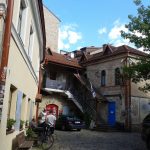
The Užupis Art Incubator is open to all beginning and experienced artistsA view from the Užupis Art Incubator to the Russian Orthodox Church of the Blessed Mother of GodThe River of Vilnia seen from the Užupis Art IncubatorAll photos are copyrighted by Vladislav B. Sotirovic© Vladislav B. Sotirovic 2020
Continue Reading
Wonderful panoramic view can be seen from the roof (platform) of Gediminas Tower (Upper Castle Tower)Despite wars and destructions, the architectural ensemble of Vilnius Old Town remains unique. Baroque domes and towers of Vilnius Old Town coexist with an irregular medieval city plan Vilnius Old Town is lacking German or Scandinavian features, rather reminiscent of Prague or Rome, Vilnius differs greatly from the other Baltic capitalsAll photos are copyrighted by Vladislav B. Sotirovic© Vladislav B. Sotirovic 2019
Continue Reading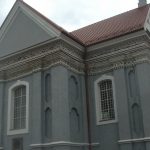
St. Lazarus' almshouse operated in this church, plague and famine victims were buried there. In 1715, the church and the monastery were given to the brethren of St. Rochus who tended to sick people, and in 1752 - to the sisters of MaryIn a cemetery at the church many outstanding people were buried, among others architect Laurynas Stuoka-Gucevičius. A memorial plaque to him is set up on the south façade of the church. However, later the cemetery was turned into a storage site of construction materialsThe church was severely damaged during a fire in 1794. The church was reconstructed and slightly transformed in 1801-1806. In 1864, the convent was closed down, and the buildings converted into a prisonAll photos are copyrighted by Vladislav B. Sotirovic© Vladislav B. Sotirovic 2020
Continue Reading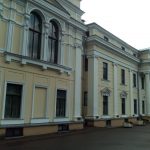
Of the two wings, only the east one is open to the public. It is used as a venue for art-exhibitions, usually for work by contemporary artistsThe east wing was given a tower in the mid-19th century. As viewing a show, visitors can admire its lavishly decorated rooms, with their elaborate woodwork and intricately painted walls and ceilingsThe most magnificent building is the eastern maintenance building, in which the interiors of the second half of the 18th century have been restoredAll photos are copyrighted by Vladislav B. Sotirovic© Vladislav B. Sotirovic 2021
Continue Reading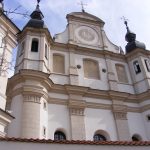
The church was financed by Grand Chancellor of the Grand Duchy of Lithuania, Grand Hetman, and Vilnius Voivode - Lew Sapieha, who had converted to Roman Catholicism from Calvinism. He was one of the most influential nobles in the Grand Duchy of LithuaniaLew Sapieha gave the church and surrounding buildings for the Bernardine nuns to have a convent and built a Sapieha family mausoleum in the churchThe convent was also a place where the daughters of rich aristocrats were taught. Today, the Church Heritage Museum operates in the churchAll photos are copyrighted by Vladislav B. Sotirovic© Vladislav B. Sotirovic 2019
Continue Reading
The Royal Palace at the foot of the Castle Hill was a residence of the Grand Duke of LithuaniaThe Lower Castle is related with the times of Sigismund the Old and Sigismund August, Qween Nona and Barbora Radvilaitė (16th century)In the 16th century the Royal Palace with its Inner Courtyard was an Italian-style palace with four wings and attics. The building around encircled the Inner Courtyard of 2,500 square metres and were connected to the eastern wall of the Cathedral Basilica by a roofed galleryAll photos are copyrighted by Vladislav B. Sotirovic© Vladislav B. Sotirovic 2018
Continue Reading
Cathedral Basilica of St. Stanislaus and St. Vladislaus in Vilnius. Today the Cathedral Basilica is in the Classicist style as it was redisigned in 1783-1801 by Lithuanian architect Laurynas Gucevičius Baroque-style Cathedral's St. Casimir's Chapel built in 1610-1632 for holding the remains of St. Casimir (declared in 1604 by Pope Clemens VIII as the saint Cathedral Basilica Bell Tower. It is rebuilt tower that was part of the defensive wall that encircled the Lower CastleSaveAll photos are copyrighted by Vladislav B. Sotirovic© Vladislav B. Sotirovic 2018
Continue Reading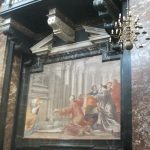
The silver cofin of St. Casimir is under a plaster canopy accompanied by relics. Under the cofin is a miraculous painting in a silver frame, with a silver statue with the saint's attributes placed on the cofin. The relief features a very rare depiction of a smiling Blessed Virgin Mary with Baby JesusIn the chapel there are eight silver-plated wooden Baroque statues of the Kings and Grand Dukes of Poland and Lithuania from the Gediminid and Jagiellon dynasties from the 17th centuryThree-Handed Image of St. Casimir c. 1520. This painting is considered to be miraculous. In 1743 the painting was put into a silver, gold-plated framing. St. Casimir is holding lilies and a rosary, which are his symbolsAll photos are copyrighted by Vladislav B. Sotirovic© Vladislav B. Sotirovic 2020
Continue Reading
The Church of the Heart of Jesus is a significant monument of Baroque (finished in 1756). It is the only Roman Catholic church in Lithuania to be built along a Greek Orthodox cross designThe church has a large octagonal cupola (dome) and a very reach the elegant exterior. The interior is no less magnificent, although it was severely damaged during the Soviet timeAfter 1945, a prison was established in the church and convent buildings. The church interior and the plan of the convent buildings were transformed. After 1990, the sacral buildings are returned to their former ownersAll photos are copyrighted by Vladislav B. Sotirovic© Vladislav B. Sotirovic 2020
Continue Reading
Bronze door of the Central Library of Vilnius University. It portrays the university's history (est. 1579) along with that of Konigsberg's University (est. 1544)The Observatory Tower, on the spire of which the Jesuit university founders placed an IHS monogram of JesusThe building's façade is decorated in Rococo-style window framing with sun and Zodiac signes, with mathematical and astronomical instruments in between the windows All photos are copyrighted by Vladislav B. Sotirovic© Vladislav B. Sotirovic 2018
Continue Reading
Its foundations are superimposed on the remains of a square tower, one of the oldest brick buildings in Lithuania, whose bricks are bound in the pre-Cothis (Baltic) manner An oval four-story tower with loopholes was built on these remains. Originally, it was a defensive tower of the Lower CastleThe underground square part dates from the 13th century, and the round part - from the late 14th century All photos are copyrighted by Vladislav B. Sotirovic© Vladislav B. Sotirovic 2019
Continue Reading
Christmas Tree decoration at the Cathedral Basilica Square in Vilnius. The belfry is seen in the backgroundChristmas decoration in front of the principal building of the castle complex in Vilnius Old Town - Cathedral BasilicaCathedral Basilica of Vilnius is erected on the place of the pagan altar with a ceasred fire to the pagan god Perkūnas (god of Thunder)All photos are copyrighted by Vladislav B. Sotirovic© Vladislav B. Sotirovic 2019
Continue Reading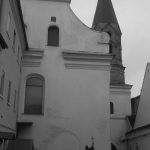
This is the first Evangelical Lutheran Church (Kirche) built-in Vilnius in 1555 on the initiative of the Chancellor of the Grand Duchy of Lithuania Nicholas Radziwiłł the Black. In front of the church, there is a monument erected to Martin Luther The church was rebuilt in 1662 and substantially reconstructed in 1738-1744. In 1944 it was closed down. In 1993 it was returned to the parishioners and renovatedThe church has a single nave and an original pentagonal shape. Its magnificent high altar was designed by German Protestant architect Jan (Johan) Krzysztof GlaubitzAll photos are copyrighted by Vladislav B. Sotirovic© Vladislav B. Sotirovic 2019
Continue ReadingChurch of St. Jacob and Philip (1)
Photo Slider Old Town in Vilnius: Vilnius University and Monastery Quarter
The Church of St. George the Martyr
Courtyard of the Medical Collegium (2)
Church of St. Nicholas
Vilnius Panorama of the Neris River
The Knight Street in Vilnius
Užupis Art Incubator (1)
Vilnius Old Town Panoramic View
Church of St. Stephen
The Verkiai Palace
Church of St. Michael the Archangel
Royal Palace – Inner Courtyard
Cathedral Basilica of St. Stanislaus and St. Vladislaus
Chapel of St. Casimir (interior)
Church of the Heart of Jesus and the Convent of the Visitationists in Vilnius
The Central Buildings of the Old Campus of the Vilnius University
The Belfry of the Cathedral Basilica in Vilnius
Vilnius Christmas Tree
Evangelical Lutheran Church

